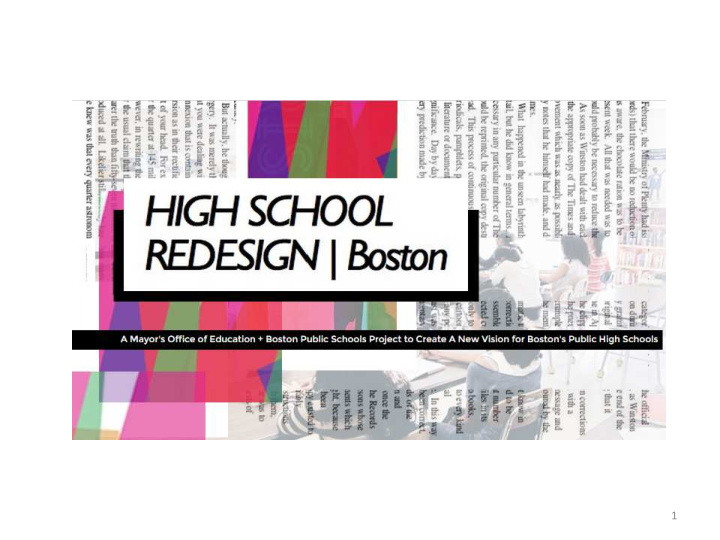



1
BPS High Schools have made some significant gains: ● The 2014 four-year graduation rate for BPS stands at 66.7 percent, up from 65.9 percent in 2013, continuing an upward trend since 2006 when that figure was just over 59 percent. ● Since 2006, the four-year graduation rate for black students increased more than 10 percentage points to 65.8 percent, while Latino students saw an increase of more than 9 percentage points to 59.8 percent. ● Boston’s drop-out rate dropped below 4 percent for the first time in history. At 3.8 percent the drop-out rate for 2014 is the second consecutive year that the district has achieved its lowest dropout rate on record. ● This good news extends to all students across all demographic groups, including English Language Learners, students with disabilities, and low income students. ● On the 10th grade ELA MCAS, the proficiency rate for ELLs has increased by 27 points since 2007 (to 49% in 2014); and by 31 points for 2 SWDs (to 43% in 2014).
Despite significant progress (including all-time high graduation rates), significant challenges remain: 66.7% BPS graduation rate is 20 • points below state average • Persistent Achievement Gaps exist for Black, Latino, Special Needs and ELL students. • Persistent gaps exist for Black, Latino, Special Needs and ELL students in college persistence and completion rates. 3
GOALS: • To ensure high school redesign efforts are guided by community ideas, priorities and needs. To identify the key elements of the • high school of the future. APPROACH: Phase I: Process Design • (Mar. – Apr. 2015) Phase II: Public Engagement + • Synthesis (May - July 2015) • Phase III: Planning + Implementation (Tentatively 2016- 2017) 4
Three skill clusters essential to the 21 st Century workplace: Digital-age literacy ● Inventive thinking ● ● Effective communication (MCREL & Metiri Group (2013) Core Competencies for the 21 st Century: ● Collaboration and teamwork ● Creativity and imagination Critical thinking ● Problem solving ● (Hanover Research, 2011) 5
• LEARNING must be: – Characterized by high expectations and high support – Engaging, challenging, and meaningful beyond school – Not be limited to BPS schools or calendar. The entire city is our classroom • SCHOOL CULTURE must serve the whole student through: – Personalized, differentiated instruction – Attention to social, emotional, and health needs – Close collaboration among teachers – Active parent and community engagement • REAL-WORLD CONNECTIONS ensure students graduate ready: – Service, internships, and applied learning opportunities – Multiple pathways 6
7
8
• What do we want our future high school graduates to know and be able to do? • What are the most important characteristics of the high school of the future? 9
• Prepare a vision and recommendations that will feed into: •The Superintendent’s Strategy + Execution Plans •Boston’s Facilities Master Plan • Engage stakeholders to make the policy, practice and systems change decisions needed to bring the vision of future high schools to life. 10
11
Recommend
More recommend